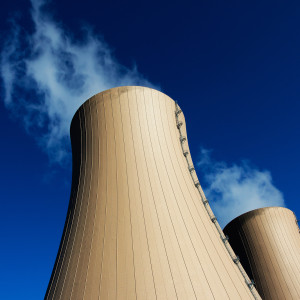In the next month, the EPA will begin holding public meetings and accepting public comments on its proposal to reduce carbon emissions from existing power plants. As a former EPA administrator, governor, and concerned citizen, I believe we must act on climate change. I strongly support efforts to transition to a clean energy economy and I hope that the EPA will continue its outreach to the public and maintain a flexible approach in achieving meaningful and lasting emissions reductions. These two elements – public input and flexibility – are key to maintaining support for emissions reductions while maintaining a reliable electric system.
EPA’s proposal would cut carbon pollution from the electricity sector by 30 percent from 2005 levels. States have options on how to achieve the goals – including installing new low-carbon electric technology such as nuclear, wind or solar generation, improving energy efficiency, or through regional initiatives to reduce emissions.
Nuclear energy already provides 1 in 5 American homes and businesses with electricity, and represents 63 percent of our clean-air and carbon-free electricity. And nuclear energy’s contribution is set to grow as five new reactors are under construction – providing more clean energy that our economy and environment demand.
America’s commercial reactors are carbon-free and are also one of the most efficient and reliable producers of electricity – operating 24/7 at industry-leading reliability. These facilities generate electricity on the hottest of days, the coldest of nights, when the wind isn’t blowing and when the sun isn’t shining. America’s decades-long leadership in nuclear energy means that every year, we prevent the emission of 570 million metric tons of carbon pollution – essentially the same amount of carbon emitted by almost all U.S. passenger cars.

Sen. Sheldon Whitehouse (D-RI) (center) hosted Fmr. GOP EPA Administrators (left to right) William Reilly, Lee Thomas, Christine Todd Whitman, and William Ruckelshaus for an Environment and Public Works subcommittee hearing on June 18, 2014. (photo via Twitter)
In today’s carbon-constrained world, there is growing recognition of nuclear energy’s role in an energy market that must be reliable, affordable and increasingly clean. Unfortunately, due to several factors, four reactors shut down in 2013 and another is scheduled to shut down this year. Some of the contributing factors are market-distorting forces and a marketplace that has not fully valued low-carbon production and reliability.
Basing long-term energy policies on short-term energy demands is a mistake. The loss of just five reactors will raise carbon emissions by more than 40 million tons per year. In light of the new regulations and the need to protect our environment for future generations, it behooves us to protect the only highly efficient and zero-emission source of baseload electricity we have.
Embracing more clean-air technologies will not only help reduce carbon emissions, it will also help reduce environmental pollutants that cause smog, acid rain, and contribute to asthma. For decades, nuclear energy has been recognized first as a power source free of any criteria pollutants – no sulfur dioxide, no nitrogen oxides, no soot, and no mercury. Regardless of where you stand on the climate change debate, clean, breathable air is something on which we can all agree.
America is at an economic and environmental crossroads and we have the opportunity to chart a more sustainable path forward. The energy policy decisions we make today invariably will have consequences for years to come. The common-sense approach is to continue to invest in a healthy mix of all electricity sources – including nuclear energy – that will provide a solid foundation for economic development while protecting our environment.

